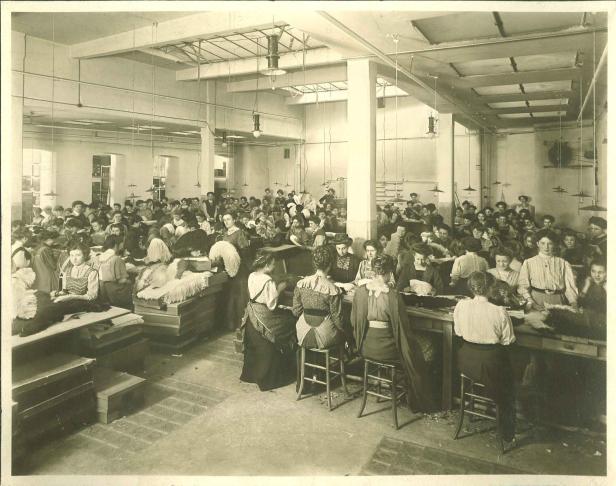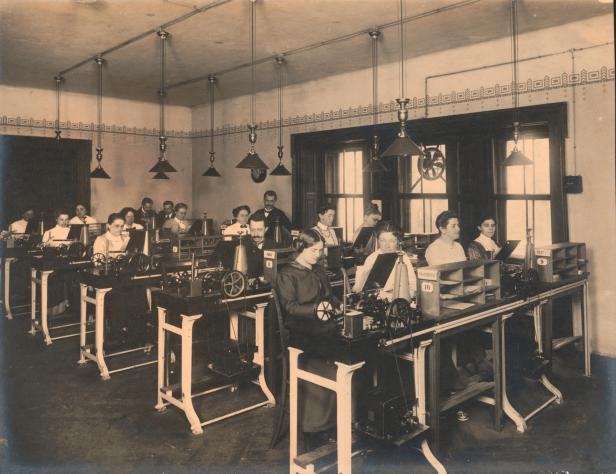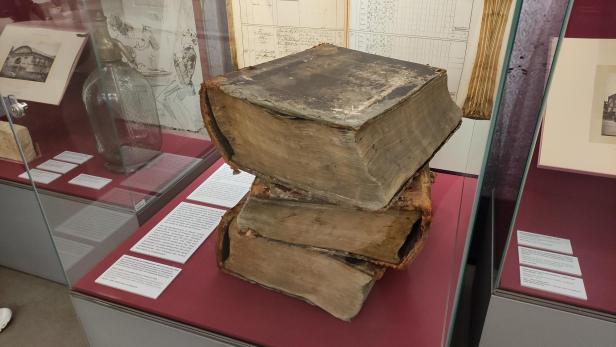150 years ago found the in Vienna world exhibition took place, for which a huge building complex around the so-called rotunda was built from scratch in the Prater. Today none of this exists anymore, but the Technisches Museum Wien has a large archive for the world exhibition. In recent years, the research institute of the museum has been working on that part of the world exhibition that Frauenpavillon was connected. From Wednesday, May 3rd, you can see a new exhibition entitled “Women at Work” admire.
The women’s pavilion at the 1873 World Exhibition in Vienna
© Technical Museum Vienna
Promoted cheap labour
In the women’s pavilion, the employment of women presented – something that has been at every World’s Fair since then. The largely middle-class audience that attended the world exhibition learned for the first time about the work women did in industry, communications, construction and agriculture. “At the time, more than 100 companies presented what women were doing for them,” says Peter Aufreiter, director of the Technical Museum in Vienna. Her main subject be a economical, not been a feminist. Women were cheap labor who were credited with perseverance, skill, patience, and diligence.
Nevertheless, the presentation of women’s work in the women’s pavilion offered the opportunity to to question the reality of women’s lives and to recognize social problems such as a lack of training opportunities, unfair pay and poverty. A lot has changed since 1873, says Minister for Women Susan Raab at a press conference on the occasion of the opening of the exhibition. Nevertheless, one can still see certain parallels to the reality of women’s lives today, for example multiple loads through gainful employment and homework. It still applies to grievances such as income gap to fight.
Workers in a feather factory. The feathers adorned hats and dresses
© Technical Museum Vienna
100 men next to the women
For “Women at Work” the ballroom of the Technical Museum as an exhibition space. He is at the beginning of the 20th century in the style of the late 19th century was designed and thus offers the optimal setting to put yourself back in the year 1873, says Martina Griesser-Stermscheg, head of the research institute of the Technical Museum Vienna and one of the curators of the new exhibition.
In the ballroom are, among other things, several large portraits of women to see those who fought for more recognition of the achievements of women. The portraits are like a replica of a gallery of “100 most important men“, which Wilhelm Exner – the later founder of the Technical Museum – had housed in his exhibition of the history of trades and inventions. The women’s pavilion had to share the building with this one.
At the time of the world exhibition, a new female profession: telegraph operators
© Technical Museum Vienna
Shocking documents
You can find out more about the background to the world exhibition and the women’s pavilion in an online portal, which was created on the occasion of “Women at Work”. In addition to text and graphics, there are also hundreds of high-resolution images to see. One of the most impressive exhibits to be seen in the physical exhibition at the museum is a stack of three thick old books. They are the status records of the Viennese foundling homes of the year 1868 8148 names of children who were given up by their mothers because of the economic crisis at the time and thus became orphans. It was in the orphanages in Austria Mortality rate at 65 percent.
Status records of the foundling homes in Vienna in 1868, shown at the Women at Work exhibition in the Vienna Technical Museum
© David Kotrba
“The best minds are women”
Ursula Plassnik, the former foreign minister and current Austrian government commissioner for EXPO 2025 in Osaka, points out that poverty, child labor and non-existent educational opportunities for girls were also widespread in their grandparents’ generation. “The world has still very struggling with thingswith which we also fought not long ago.” It is all the more important to support girls and women and to enable them to take up any profession they want to learn. Women’s Minister Raab adds combatively: “Digitization, innovation and technologythere they are jobs of the future. It needs the best minds for it. The best minds are women.”
This article was created as part of a cooperation between the Technisches Museum Wien and the futurezone.





